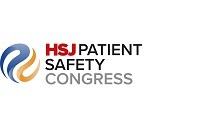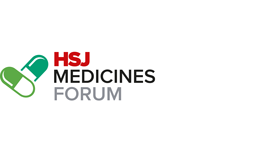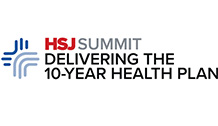An audit at one trust highlights the need to improve the quality of medicines related discharge information to protect patients, say Nina Barnett and colleagues

Medication inconsistencies are increasingly prevalent following discharge from hospital.
Up to 70 per cent of patients experience a medication error or unintentional change to their medicines on transfer of their care between different settings.
Furthermore, the risk of adverse drug events post-discharge increases by 4.4 per cent for every drug altered or changed.
Ideally, on admission to hospital, effective medicines reconciliation will identify a patient’s medication history.
‘Documentation of reasons for commencing or altering medications during hospitalisation is sporadic and inconsistent’
During inpatient episodes, medications are often stopped and changed or new medications are started according to clinical need. To ensure patient safety at the point of discharge, medicines reconciliation is required to ensure accurate information is transferred to the care sector.
A Care Quality Commission survey found that 81 per cent of GP practices reported that details of prescribed medicines were incomplete or inaccurate on discharge summaries “all” or “most” of the time.
At North West London Hospitals Trust, the electronic discharge notification (EDN) is the sole method of information transfer regarding medicines, along with admission details, to GP practices.
Accuracy audit
An audit was conducted to establish the content and quality of discharge communications surrounding medicines. This examined the accuracy of information transferred from medical notes to the EDN, focusing on medicines that had been newly started, stopped or changed in hospital.
The audit was conducted over one month, March 2012, on a 34 bed acute care of the elderly ward. Data for 65 consecutive patients discharged from the ward were reviewed.
Audit results
- Of 33 medications documented as newly initiated in the medical notes, 84 per cent had been categorised as “new” on the EDN. An indication was documented 75 per cent of the time in medical notes and 60 per cent of the time on the EDN.
- Of the 19 medications documented as “stopped” in the medical notes, 94 per cent had been categorised as “stopped” on the EDN. A reason was documented 63 per cent of the time in medical notes, all of which were transferred to the EDN.
- Of the 12 cases where existing medications were “amended”, 91 per cent had the change documented on the EDN. A reason was documented in medical notes 100 per cent of time, but only 45 per cent of the time on the EDN.
The investigation provides insight into how medication information is transferred from patient admission to discharge.
The results suggest that information transferred to primary care providers is often incomplete. It highlights that documentation of the reasons for commencing or altering medications during hospitalisation is sporadic and inconsistent.
‘Fewer than 10 per cent of elderly patients are discharged on the same medicines they were admitted on’
Encouragingly, the multidisciplinary team nearly always (94 per cent of the time) documented medications stopped, including the associated reasons, on the EDN. However, there was concern that reasons for altering or changing existing medications were only documented 45 per cent of the time on the EDN.
Similarly, where a new medication was started, reasons were documented just 61 per cent of the time.
Fewer than 10 per cent of elderly patients are discharged on the same medicines they were admitted on. Further data suggests 28-40 per cent of medicines were discontinued, 45 per cent newly prescribed and 60 per cent of patients had three or more medicines changed during hospitalisation.
Audit recommendations
Medication details documented at discharge are frequently inaccurate and can compromise patient safety. The audit makes several key recommendations:
- Improvement of the current EDN format to facilitate key data entry around reasons for medication changes and new medicines started in hospital.
- Focused education and training on safety issues surrounding medicines related discharge.
- Establishment of electronic medicines reconciliation records linked to the EDN (and eventually electronic prescribing).
Scale of inaccuracies
These figures emphasise the magnitude of medication related changes and the potential for inaccuracies when transferring information between care settings.
A potential explanation for documentation failure might be related to the EDN’s inherent structure. Currently there is no dedicated field for this purpose. Conversely, there is a textbox with dropdown menus for medications stopped. Similarly, there is no dedicated space for any new medications started.
Other factors might include junior trainees overlooking the significance of such information; and multiple junior doctors caring for one patient – owing to shift patterns and working restrictions.
Increased patient turnover and time pressure, in conjunction with the increasing complexity of patients and frequent medication changes could also affect EDN completeness, presenting considerable challenges to healthcare professionals.
Acknowledging the limitations of the audit, it was conducted on an elderly patient population discharged from a busy acute hospital in North West London. Some patient notes were inaccessible and not all patients benefited from medicines reconciliation, which could have affected results.
Areas to change
Solutions for improving the current medication reconciliation process focus on several modifiable factors:
- Optimisation of the EDN structure to include pro formas for medication changes and new medication: This will facilitate the entry of data that is currently being omitted. This audit demonstrates that a separate section for medications stopped corresponds with 100 per cent documentation of reasons. The current electronic pro forma could easily be modified to replicate its proven efficacy and changing the font or colour could prevent this information being overlooked.
- Training and education on safety issues surrounding medication information transfer for EDN users: The audit findings emphasise the requirement for appropriate education and training provision on the EDN. This could be addressed through generic, ongoing mandatory prescriber training, highlighting the clinical and medicolegal consequences of poor discharge communication and its impact on GPs.
- Use of summary care records to facilitate medicines reconciliation: The advent of access to summary care records will allow clinicians access to GP records from hospital settings and may allow electronic medication reconciliation on patient admission. Data could subsequently be transferred to the EDN and authorised for discharge upon review by a pharmacist and doctor. This would allow easier identification of medications stopped, started or changed and the corresponding reasons.
Electronic prescribing might play a fundamental role in reducing the current level of errors and omissions. IT systems have the potential to significantly improve safety and accuracy of communication between hospitals and GPs and the accuracy of information transferred between secondary and primary care.
Nina Barnett is consultant pharmacist, care of older people; Maria Vilasuso is consultant in elderly care and acute medicine; Dr David Pettitt is a junior doctor and Anjali Hathi is a band 6 rotational pharmacist at North West London Hospitals Trust


























No comments yet